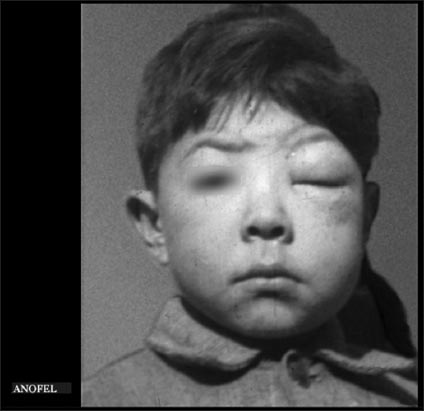Romana’s sign
Patrice Bourée
Unité des maladies parasitaires, Hôpital Cochin, 75014 Paris, France
Romaňa’s sign is the first symptom of american trypanosomiasis (or Chagas’ disease). When the route of inoculation of parasites (Trypanosoma cruzi) is the ocular mucosa, edema of the eyelids and conjunctivitis may occur. This unilateral periorbital edema which does not pit on pressure and with a dry skin is thought to be pathognomonic for early Chagas’disease. Chagas’disease is a zoonosis, caused by Trypanosoma cruzi, which was discovered by Carlos Chagas in Brazil in1909. About 18 million persons are infected in south America, mostly in Brazil and Argentina. Cecilio Felix Romaňa (1899-1997) was an Argentinean researcher dedicated to tropical diseases firstly in the area of Santa Fe then in Oswaldo Cruz Institute (Rio da Janeiro) with S. Mazza. Romaňa became famous when he described this symptom in 1935. But, the director of the Institue, S. Mazza, never accepted neither the specificity of this sign nor its popular name as Romaňa’s sign.
Notes
Source of Support: Nil
Conflict of Interest: None declared.

Comments are closed.